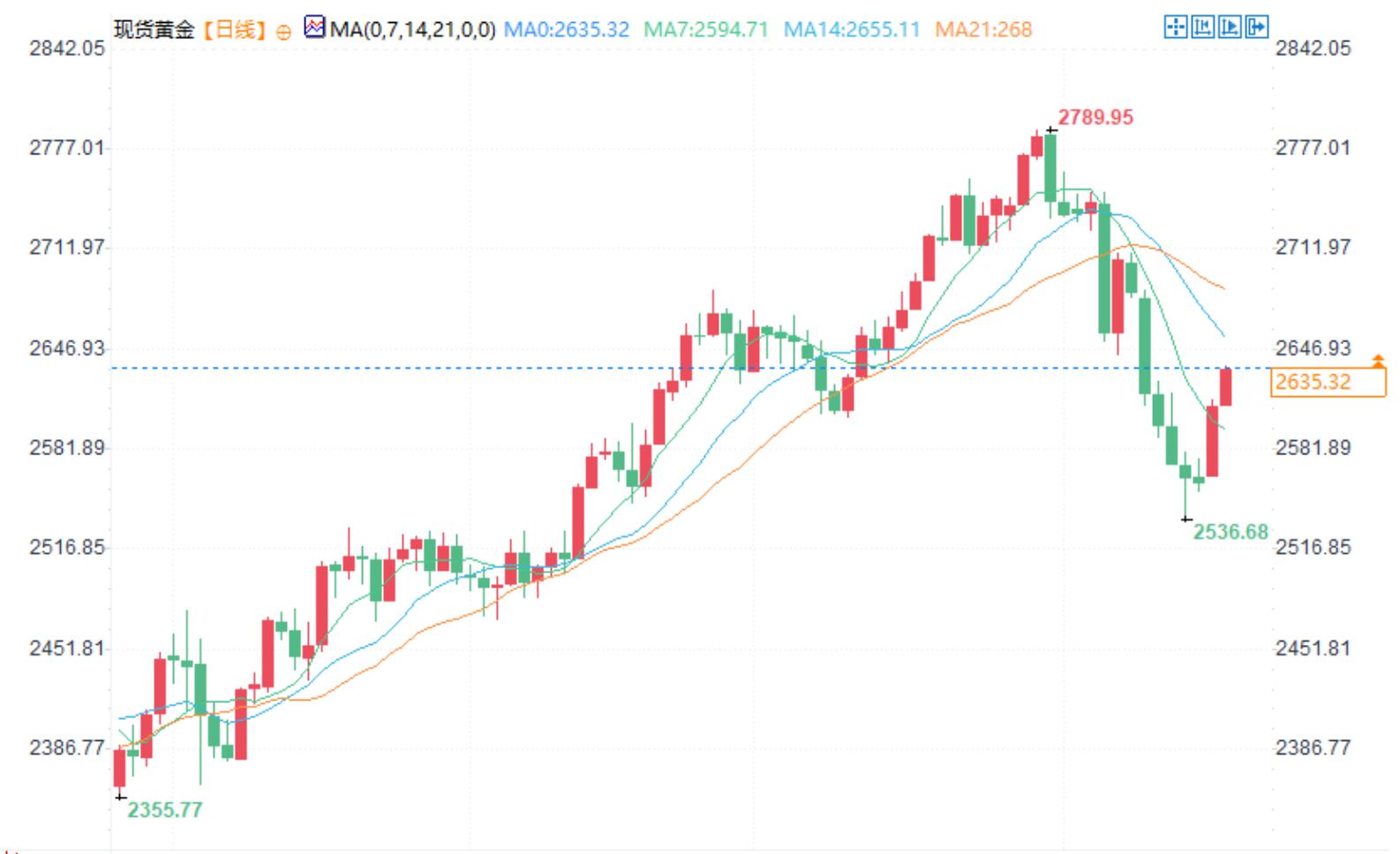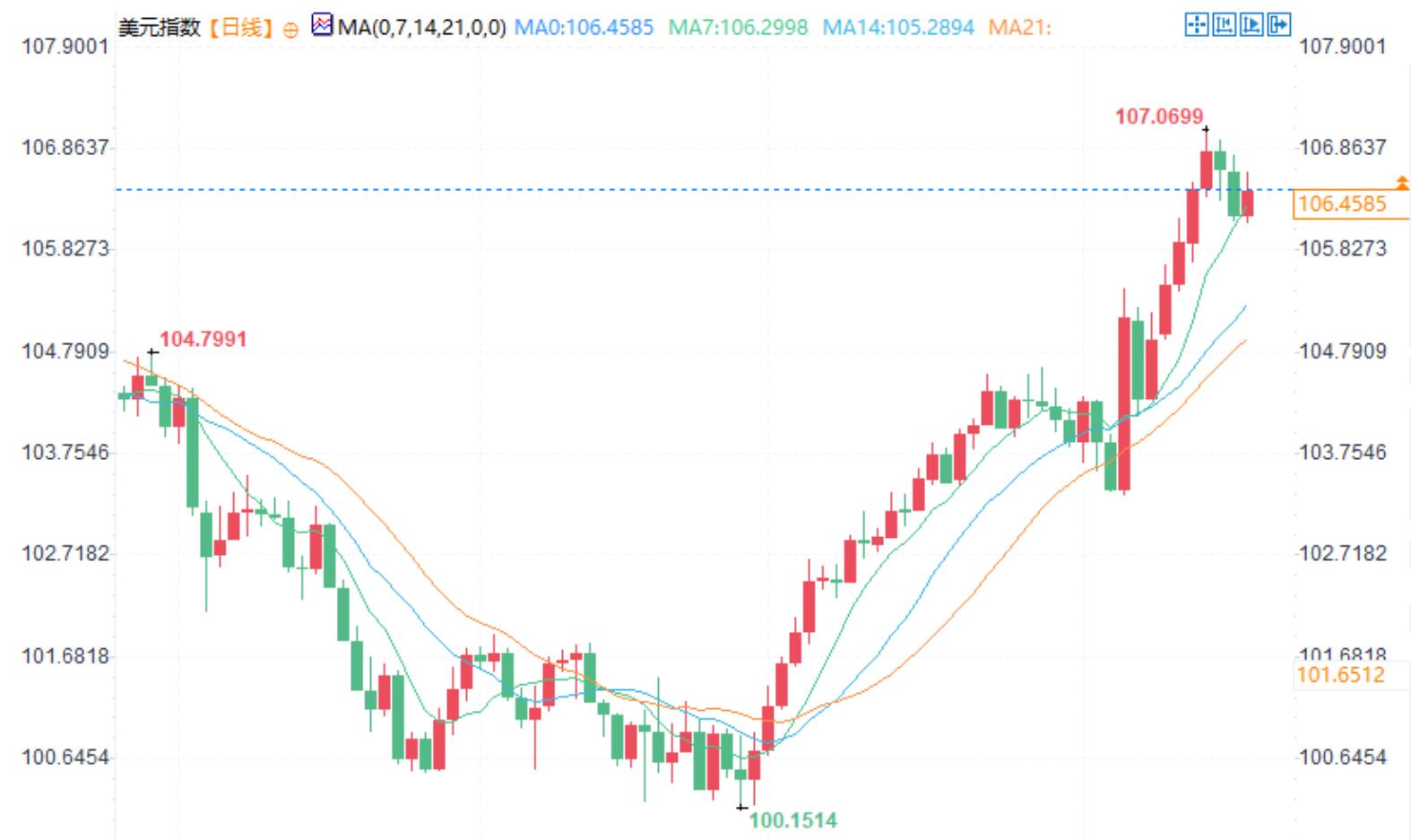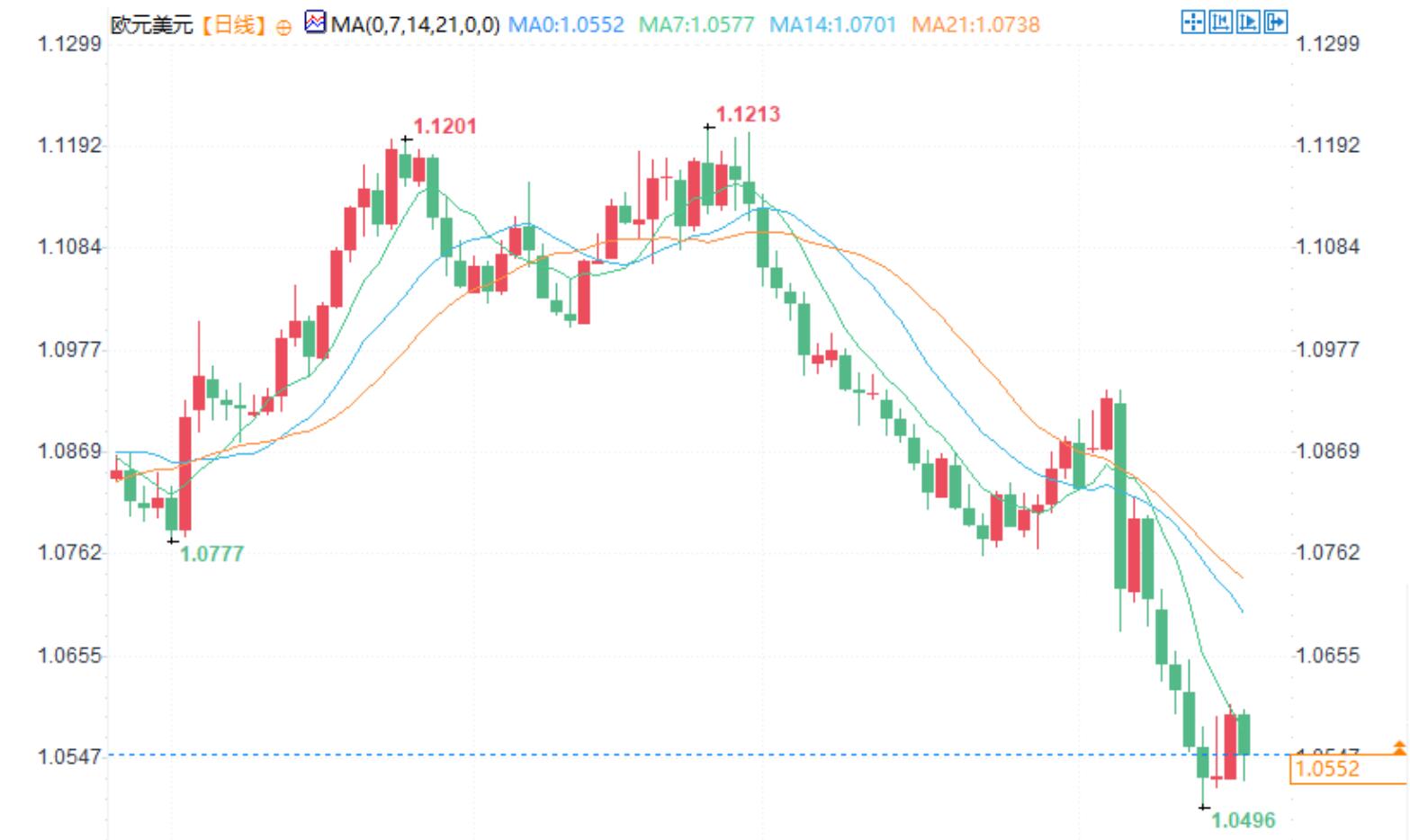The US dollar rebounds, gold steadily rises, and the oil market oscillates and adjusts
On Tuesday (November 19th), as of 19:11 Beijing time, the global market was volatile and showed a trend of differentiation: the US dollar index rebounded slightly from its recent low and is now at 106.42, up 0.21%, but still below the 107 level touched last week; Spot gold continued to rise slightly, reaching $2634.50 per ounce, an increase of 0.87%; The crude oil market continued to adjust, with Brent crude oil falling 0.22% to $73.00 per barrel and US crude oil falling 0.48% to $68.84 per barrel. The market's response to recent policy signals and geopolitical factors has formed a game pattern among different assets.
Gold: Safe haven demand drives up gold prices, policy expectations limit gains
Spot gold has risen for two consecutive days, driven by geopolitical risks, and safe haven sentiment has become the main driving force. In particular, the President of the United States approved Ukraine to use US made missiles to penetrate into Russia, further warming the risk of Russia-Ukraine conflict and providing support for the gold price.
Nevertheless, the Federal Reserve's policy outlook puts some pressure on gold. The current market expectation is that the pace of future interest rate cuts by the Federal Reserve will be more cautious, which supports the yield of the US dollar and US Treasury bonds and exerts some pressure on gold. Renowned analyst Haresh Menghani pointed out that although gold has a strong short-term trend, the US dollar attracts bargain hunters, and the rise in yields may limit further breakthroughs in gold prices. He reminded investors, "The upward trend of spot gold may be limited by the $2650 level, and if it breaks through, it may challenge historical highs, but in the short term, we need to be vigilant about the risk of a rebound in the US dollar
From a technical perspective, the upper pressure level of gold is at $2650, and the lower support is focused on the $2610 area. Market participants should pay attention to Friday's US manufacturing and service PMI data, which may provide more trading guidance for gold prices.

The US dollar index stabilizes, awaiting guidance from economic data
As of 19:11 Beijing time, the US dollar index rose slightly by 0.21% to close at 106.4194. Compared to last week's high of 107.07, the US dollar has experienced a correction trend. The stabilization at the beginning of this week was mainly supported by the volatility of US bond yields, while the market's divergence on the future policy path of the Federal Reserve also limited the further adjustment space of the US dollar.

Fundamental factors indicate that the strong resilience of the US economy has made investors cautious about the Federal Reserve's expectation of maintaining high interest rates in the short term. Although the market has priced the probability of a rate cut in mid-2024, a series of strong economic data in recent times have weakened this expectation. In addition, analysts from well-known institutions have pointed out that the upcoming fiscal team of the Trump administration will have a profound impact on the future direction of fiscal policy. Especially, if the expansionary nature of fiscal policy is significant, it may further push up budget deficits, thereby forming more complex impacts on the US dollar.
EUR/USD fell 0.36% to 1.0559. The market is paying attention to the upcoming release of Eurozone negotiated wage data and PMI data, which may become important references for the European Central Bank's decisions in December. Analysts from Citibank believe that the European Central Bank may face pressure to tighten its policies in a "preemptive" manner.

USD/JPY closed at 153.792, down 0.56%. Analysts believe that the cautious attitude of the Bank of Japan towards the timing of interest rate hikes, as well as the market's wait-and-see attitude towards intervention measures, make the trend of the yen appear fragile.
Crude oil: supply tension eased, market structure weakened
Brent crude oil and WTI crude oil prices both fell at the beginning of this week, with Brent at $73.00 per barrel and WTI at $68.84 per barrel. Behind the price correction, on the one hand, the Johan Sverdrup oil field in Norway has resumed partial production, easing the supply pressure caused by power outages previously; On the other hand, the US crude oil market has entered a contango structure, indicating a easing of supply tension.
However, geopolitical risks still provide support for the oil market. With the escalation of the US Ukraine conflict, market concerns about the stability of the global energy supply chain are heating up. Fujitsu Securities analyst Toshitaka Tazawa pointed out that "the potential support of the Russia Ukraine situation and the Middle East conflict for oil prices cannot be ignored, but the short-term recovery of the supply side may suppress the upward space
Structurally, the market is less worried about the medium-term supply side, but if the Russia-Ukraine conflict escalates further, it may trigger new price fluctuations. Investors need to closely monitor the progress of oilfield maintenance and geopolitical related news.

US Treasury: Increased volatility in yields, widening divergence in long-term prospects
The US Treasury market continues its recent volatility, with short-term yields rising and long-term yields falling due to policy uncertainty. Investors are currently paying close attention to Trump's potential nomination for Treasury Secretary, and if the candidate tends to support large-scale tax cuts and increased spending, US Treasury bonds may come under pressure.
Chris Turner of Dutch International Group analyzed that "the huge budget deficit in the United States has put pressure on long-term US Treasury bonds, and if Trump's new policies lack a counter mechanism, it may lead to further increases in yields
Summary and Prospect
Today's market trend shows that various asset classes are influenced by different fundamental factors, especially geopolitical risks and policy expectations becoming the dominant variables. The safe haven properties of gold and the US dollar continue to be sought after, but the technical gains may be constrained by policy factors; Crude oil prices have fallen due to supply recovery, but geopolitical risks provide support; The US bond market is paying attention to the direction of fiscal policy.
In the next few days, investors need to pay attention to the US economic data, the policy signals of the European Central Bank and the latest developments of the Russia-Ukraine conflict. These factors may continue to dominate market trends, and professional traders need to remain vigilant and respond flexibly.
Tips:This page came from Internet, which is not standing for FXCUE opinions of this website.
Statement:Contact us if the content violates the law or your rights
